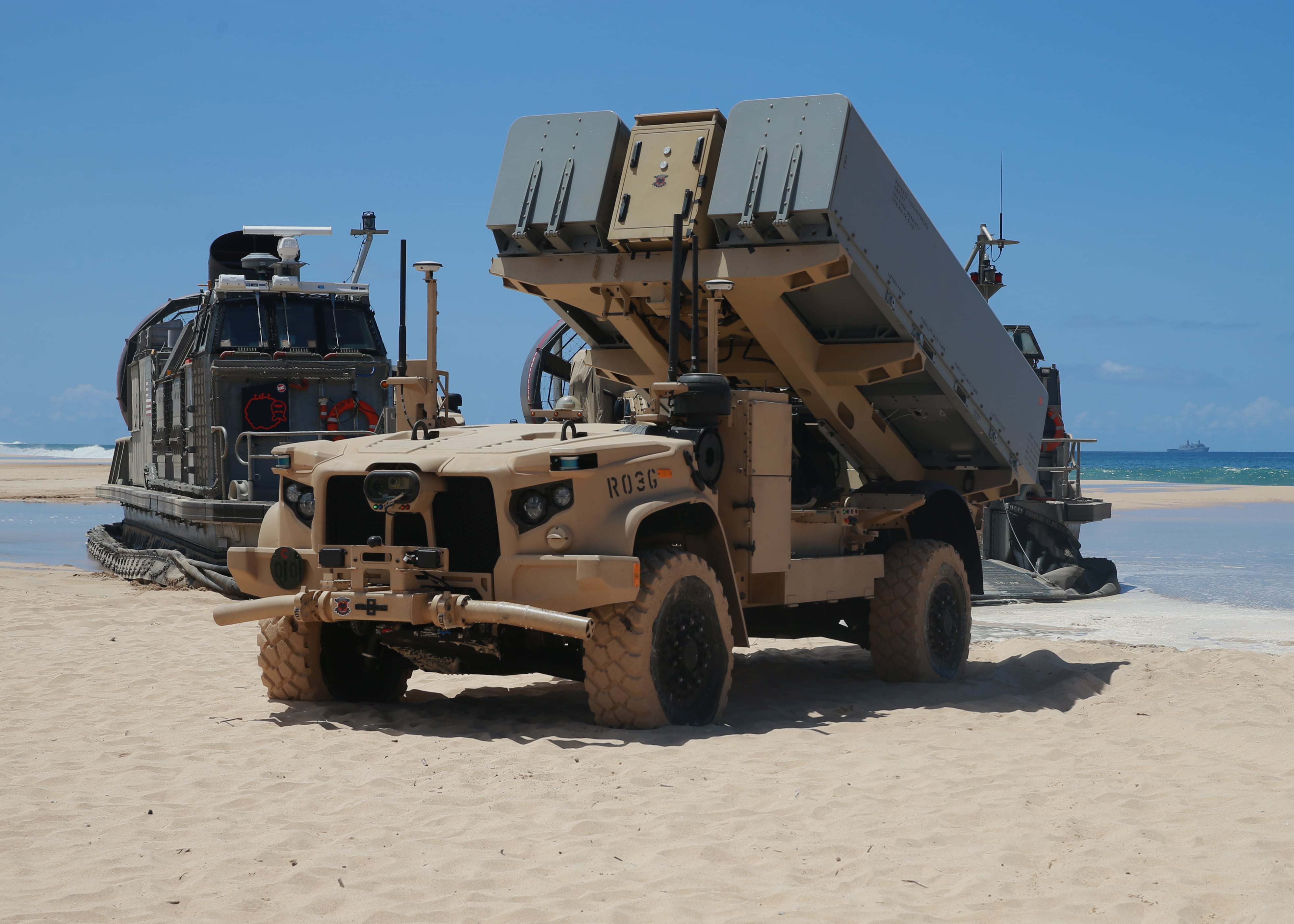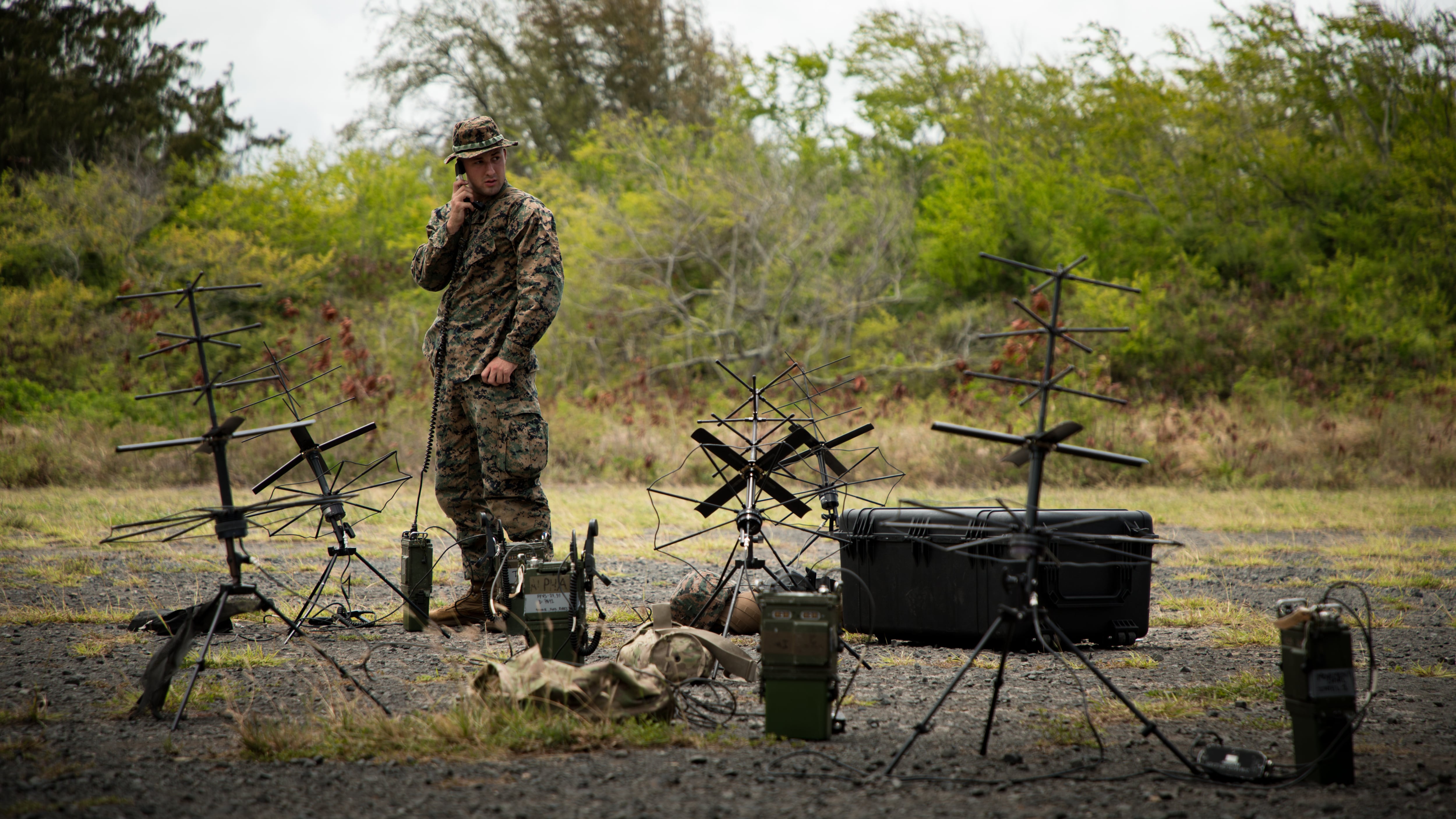WASHINGTON — The U.S. Marine Corps is asking for money in fiscal 2024 to speed up its forcewide modernization effort as it tries to rapidly field new weapons, sensors and data processors, the commandant told Defense News.
The acceleration attempt comes as the service learns to leverage new tools and organizational structures under the Force Design 2030 transformation effort, and as threats in the Pacific put pressure on Marines there to grow more capable and nimble.
Documents from the recently released FY24 budget request show the Corps wants $16.9 billion in equipment modernization alone, plus $343 million for the related Talent Management 2030 reform effort and $581 million for training and education modernization. Force Design’s focus is evolving toward supporting the people performing the service’s mission as well as how they’re trained and retained.
Commandant Gen. David Berger told Defense News on Wednesday at the McAleese & Associates conference that the budget request would speed up “everything from anti-ship capability to sensing capability to [unmanned aerial vehicles] to the processing of all that information and intelligence we’re going to collect.”
It also fields larger acquisition programs like the CH-53K heavy-lift helicopter and F-35 Joint Strike Fighter “as fast as we can.”
Berger previewed his unfunded priorities list, which will go to lawmakers later this month. He said the list won’t include anything unique but rather would use additional funds from lawmakers to speed up these ongoing modernization efforts.
Budget documents show the Marine Corps’ biggest bucket of spending is $6.55 billion for logistics systems, transportation and pre-positioning assets. This includes money for the final two KC-130J refueling and cargo planes, 15 CH-53K heavy-lift helicopters, 80 personnel variant Amphibious Combat Vehicles, and 396 Joint Light Tactical Vehicles.
The service also requested $5.65 billion for platforms that sense and detect. These include the F-35 Lightning II Joint Strike Fighter — 16 vertical-landing “B” variants and four carrier-landing “C” variants — and 18 MQ-9A drones.

Another $971 million in spending covers air- and ground-launched fires, including $363 million for the NMESIS — the Navy/Marine Corps Expeditionary Ship Interdiction System, which is essentially an unmanned Joint Light Tactical Vehicle with a sophisticated radar and launchers full of anti-ship missiles. Budget documents show this category of spending includes funding for 90 Naval Strike Missiles and 34 tactical Tomahawk missiles that offer 10 times greater range, giving the NMESIS launchers options and depth.
Budget documents outline another $864 million for defense against air, ground and electronic attack; $478 million for data integration, analysis and dissemination tools; and $201 million for the fusion of sensors data for planning, direction and control, among other Force Design 2030 spending categories.
At a separate event Thursday, Berger again said the FY24 request sought to “not just maintain momentum, but add speed” to fielding these capabilities to Marines.
During Defense One’s State of the Marine Corps online event, the commandant said China represents a pacing challenge to the U.S. “You have to not just keep pace, you want to stay in front of that. So the funds in this year’s budget allow us to accelerate everything from command and control to fires to” sensing, he added.
In the same event, Brig. Gen. Joseph Clearfield, the deputy commander of Marine Corps Forces, Pacific, said this acceleration comes as his Marines in Japan, Hawaii and throughout the region are feeling temporal pressure. In China, he sees a force that is 2.5 million strong, all reporting to a single authoritarian leader.
“I don’t think time is our friend right now. I think we feel like we’re on the clock right now and it’s counting down,” he said.
Referencing Russia’s invasion of Ukraine, Clearfield said the world is “seeing right now what happens when you have an army like that that just answers to one person — what can happen very very quickly. So I think we feel like we’re on the clock” to create a strong deterrent to stop China from invading Taiwan or picking another fight with a local nation.
China considers Taiwan a rogue province and has threatened to take back the island by force.
To that end, the Defense Department also included $9.1 billion in its FY24 request for the Pacific Deterrence Initiative, which would allow the Marine Corps to build out its new Camp Blaz on Guam and increase its operations in the region.

Berger told Defense News after his remarks at the McAleese conference that the Pacific Deterrence Initiative funds wouldn’t necessarily add more exercises to the regionally based Marines’ schedules, but rather add “more countries as part of the exercise, where you do the exercise, who’s invited,” he said — and ensuring the training happens “where the [People’s Republic of China] can see it happening.”
The spending will also help, “as fast as possible, getting 3rd [Marine Littoral Regiment] up to where they’re fully operationally capable. Start building the 12th MLR. Distribute the force. Work with the Philippines and Japanese and everybody else, Australia. Build out Guam quickly. All that.”
The FY24 request supports increasingly complex operations and experimentation for the Hawaii-based 3rd MLR. It would also begin transitioning the 12th Marine Regiment, 3rd Marine Division, an artillery regiment in Okinawa, Japan, into the Corps’ second MLR. The regiment would officially become 12th MLR in 2025 and reach initial operational capability by 2027, Clearfield said.
And, Berger added, the budget allows the service to plan for the potential conversion of 4th Marine Regiment, 3rd Marine Division down the line.
“As [the first two MLRs] train, practice, operate, we’ll know for sure whether the third one, which is 4th Marines: Should it become an MLR also or stay as a regiment? And I think that’s a decision probably next year to make, I would imagine, but we’re leaning forward as if yes, that way you’re not caught flat-footed,” Berger said.
Megan Eckstein is the naval warfare reporter at Defense News. She has covered military news since 2009, with a focus on U.S. Navy and Marine Corps operations, acquisition programs and budgets. She has reported from four geographic fleets and is happiest when she’s filing stories from a ship. Megan is a University of Maryland alumna.








